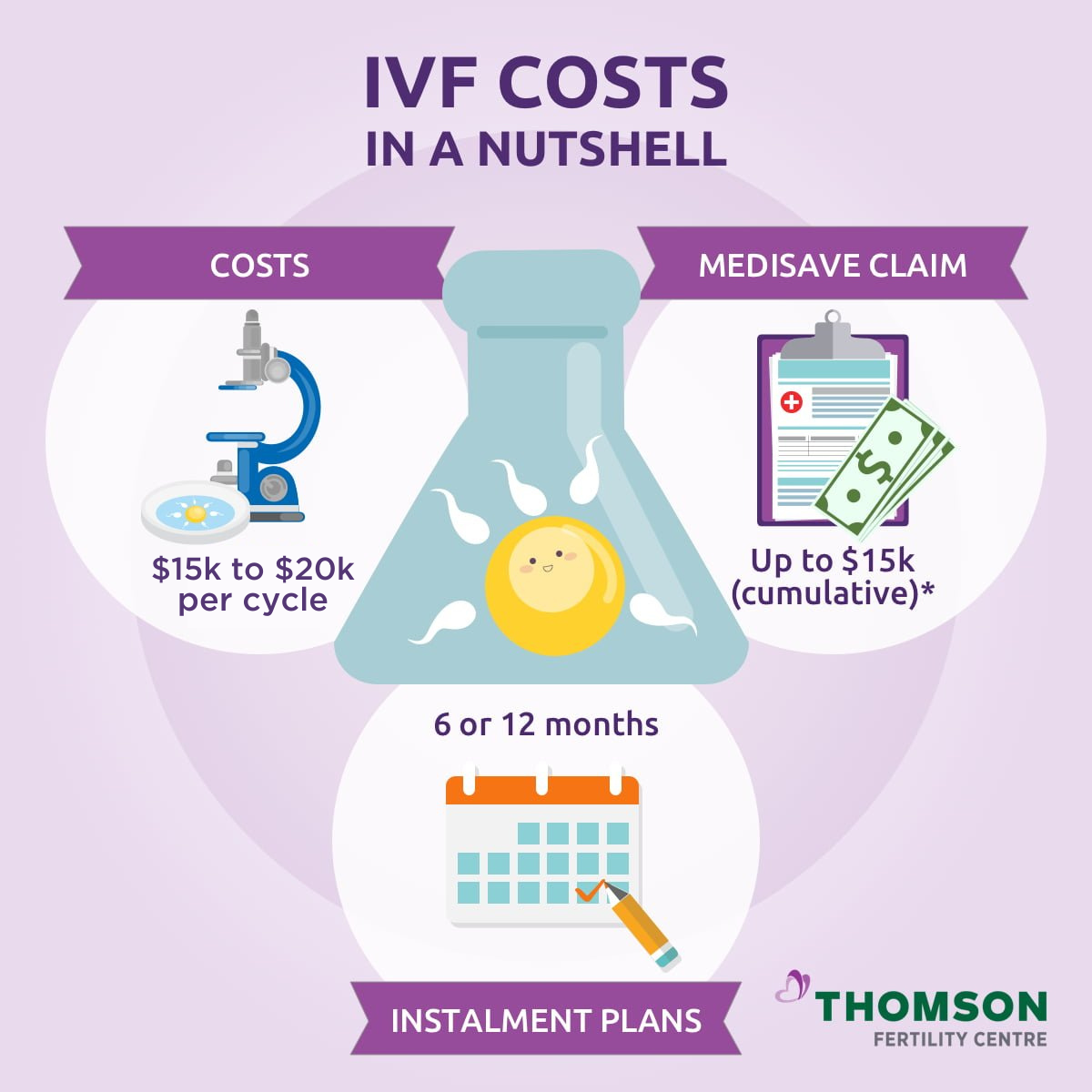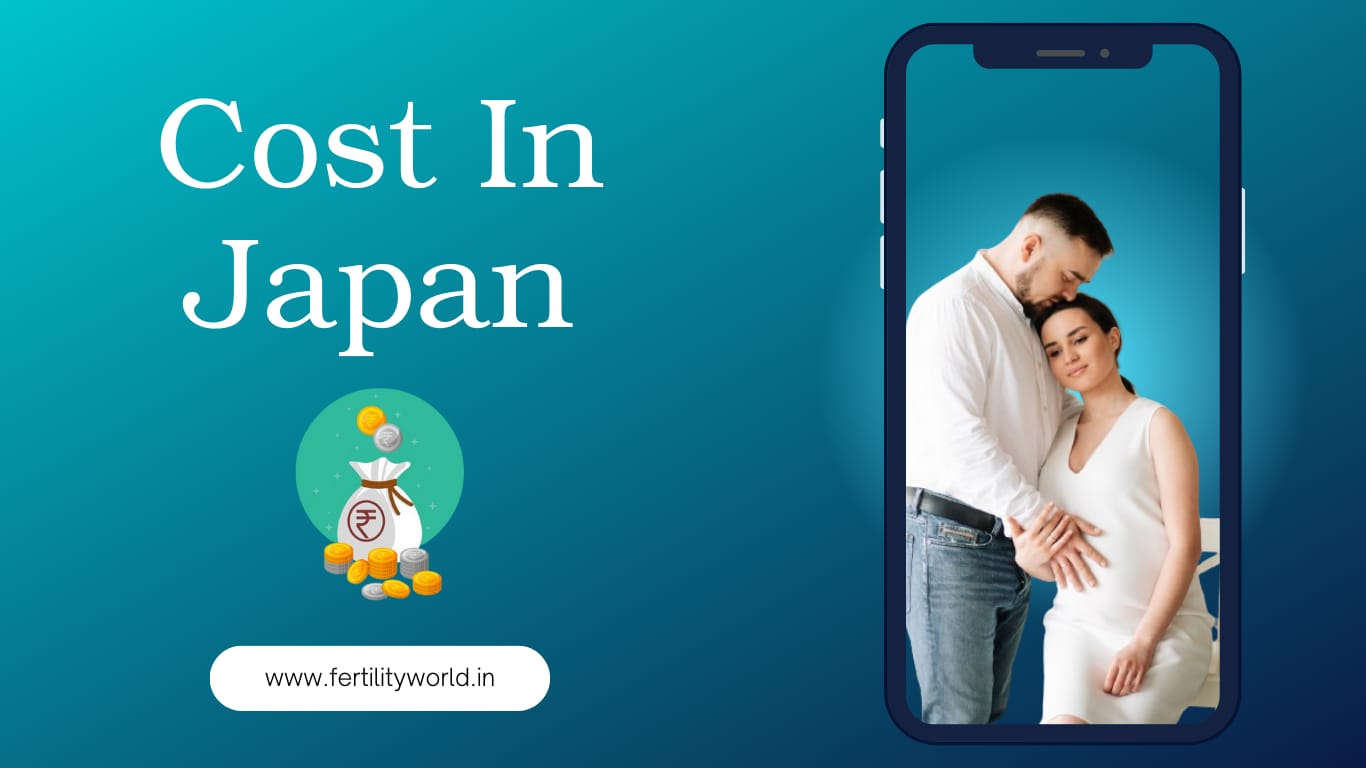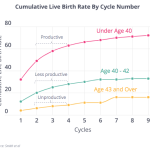What Does IVF Cost in 2025? A Deep Dive into Fertility Treatment Expenses
Starting a family can feel like a dream come true, but for many, the journey involves more than just hope—it involves in vitro fertilization (IVF). If you’re considering IVF, one of the first questions that pops up is, “How much is this going to cost?” It’s a big question, and the answer isn’t simple. IVF costs in the United States can vary wildly depending on where you live, what your treatment plan looks like, and even what extras you might need along the way. In 2025, with new trends, policies, and options emerging, understanding these costs is more important than ever.
Let’s break it down together. Whether you’re just curious or ready to take the plunge, this guide will walk you through everything you need to know about IVF expenses—plus some fresh insights and practical tips you won’t find everywhere else.
The Big Picture: How Much Does IVF Really Cost?
IVF isn’t cheap, but it’s not a one-size-fits-all price tag either. On average, a single IVF cycle in the U.S. ranges from $12,000 to $25,000, according to recent estimates from fertility experts and clinics. That’s just the starting point, though. When you add in medications, testing, and other services, the total can climb to $50,000 or more—especially if you need multiple rounds to get pregnant.
Why such a wide range? It’s all about the details. Your location, the clinic you choose, and your unique medical needs play a huge role. For example, a basic cycle in a smaller city might cost closer to $12,000, while a high-end clinic in New York or Los Angeles could charge $20,000 or more before you even blink. And here’s the kicker: most people don’t succeed on their first try. Studies show the average patient goes through 2 to 3 cycles, so those costs can add up fast.
Here’s a quick snapshot of what you’re looking at:
- Basic IVF Cycle: $12,000–$25,000
- Medications: $3,000–$6,000 per cycle
- Additional Services (like genetic testing): $1,000–$5,000
- Average Total for 2–3 Cycles: $40,000–$60,000
Sounds overwhelming, right? Don’t worry—we’re going to unpack every piece of this puzzle so you can plan with confidence.
Breaking Down the Costs: What’s Included in an IVF Cycle?
Think of an IVF cycle like a recipe. There’s a base mix of ingredients, but every chef—or clinic—adds their own flair. Here’s what you’re typically paying for in that $12,000–$25,000 range:
The Core Components
- Monitoring Appointments: These are the check-ins where doctors use ultrasounds and blood tests to track your progress. Expect 4–6 visits per cycle, usually included in the base fee.
- Egg Retrieval: A minor surgery to collect eggs from your ovaries. It’s done under anesthesia, and the cost (around $2,000–$4,000) is part of the package.
- Fertilization: In the lab, your eggs meet the sperm—either naturally or with a boost called ICSI (more on that later). This step is covered in the base price.
- Embryo Transfer: Placing the embryo into your uterus. It’s a quick procedure, and the $1,000–$2,000 cost is usually bundled in.
The Extras That Add Up
That base fee sounds manageable until you realize it doesn’t always include everything. Here’s where the bill can grow:
- Medications: Hormones to stimulate egg production can cost $3,000–$6,000 per cycle, depending on your dosage and how long you need them.
- Pre-Treatment Testing: Bloodwork, ultrasounds, and semen analysis before you start might run $250–$500.
- Anesthesia: Some clinics charge separately for this, adding $500–$1,000.
A Real-Life Example
Take Sarah, a 34-year-old from Texas. Her clinic quoted $14,000 for a basic cycle. But after adding $4,000 for meds and $300 for initial tests, her first round hit $18,300. That’s pretty typical—and it’s why understanding the fine print matters.

Why IVF Costs Vary So Much
Ever wonder why one clinic charges $12,000 while another asks for $25,000? It’s not random. Here are the big factors driving those differences:
Location, Location, Location
Living in a big city like San Francisco or Chicago often means higher prices—think $20,000 or more per cycle. Clinics in rural areas or smaller towns might offer the same treatment for $12,000–$15,000. It’s all about overhead costs like rent and staff salaries.
Clinic Reputation and Tech
Fancy clinics with cutting-edge labs and top success rates tend to charge more. They might use advanced tools or offer perks like personalized care, which bumps up the price. A smaller clinic with solid results but less flash could save you thousands.
Your Personal Needs
Your body’s unique story matters too. If you need extra help—like donor eggs or sperm—the costs skyrocket. Donor eggs, for instance, can add $35,000–$60,000 to the tab, depending on whether they’re fresh or frozen.
Fun Fact: IVF Around the World
In 2025, the U.S. remains one of the priciest places for IVF. Compare that to India, where a cycle might cost $3,000–$4,000, or the Czech Republic, a hotspot for “fertility tourism” at $5,000–$7,000. Travel might be an option if you’re near a border or up for an adventure!
Hidden Costs You Might Not Expect
The base price is just the beginning. There are sneaky expenses that can catch you off guard if you’re not prepared. Let’s shine a light on them:
Storage Fees
Got extra embryos? Freezing them for later use costs $500–$1,000 upfront, plus $200–$400 per year to keep them on ice. It’s a small price for peace of mind, but it adds up over time.
Travel and Time Off
If your clinic’s far away, gas, parking, or even flights could pile on hundreds of dollars. Plus, taking time off work for appointments might mean lost wages—something few people budget for.
Emotional Support
IVF can be a rollercoaster. Counseling or support groups aren’t usually covered by clinics, but they’re worth considering. A session might cost $50–$150, and it could make all the difference.
Quick Tip
Ask your clinic for a detailed cost breakdown before you start. Some bundle everything into one price; others nickel-and-dime you with add-ons. Knowing upfront saves headaches later.

Does Insurance Cover IVF?
Here’s the million-dollar question: Will your insurance pick up the tab? The answer depends on where you live and what plan you have.
The State of Insurance in 2025
As of March 31, 2025, 20 states have laws requiring some level of fertility coverage, but only 14 mandate IVF specifically. States like New York and California are pushing for broader access, with new bills floating around to make insurance companies cover it. Even so, loopholes—like exemptions for small businesses—mean many still pay out of pocket.
What’s Typically Covered
- Testing: Bloodwork and ultrasounds are more likely to be covered than the full IVF cycle.
- Partial IVF: Some plans cover meds or monitoring but stop short of egg retrieval or transfer.
- Full Coverage: Rare, but golden if you’ve got it—think $0 out-of-pocket for everything.
A Game-Changer on the Horizon
In February 2025, the White House issued an executive order pushing for better IVF access, estimating cycles at $12,000–$25,000 and urging lower costs. It’s too early to see the full impact, but it’s sparking hope for cheaper options down the road.
Interactive Quiz: Is Your IVF Covered?
Answer these quick questions to get a sense of your odds:
- Do you live in a state with an IVF mandate? (Check the list online!)
- Yes ✔️ | No ❌
- Does your employer offer fertility benefits?
- Yes ✔️ | No ❌
- Is your plan self-funded (common with big companies)?
- Yes ❌ | No ✔️
Two or more ✔️s? You might have some coverage. Mostly ❌s? Time to budget.
The Add-Ons: Are They Worth It?
IVF isn’t just eggs and embryos—there are optional extras that promise better odds. But do they deliver, and are they worth the cost? Let’s dig in.
ICSI (Intracytoplasmic Sperm Injection)
- Cost: $1,000–$2,000
- What It Is: A single sperm is injected into an egg to boost fertilization.
- Worth It?: Great for male infertility issues (like low sperm count), but studies show it’s overused—up to 70% of U.S. cycles include it, even when it’s not needed.
PGS/PGT (Preimplantation Genetic Testing)
- Cost: $3,000–$5,000
- What It Is: Screens embryos for genetic issues before transfer.
- Worth It?: Helpful if you’re older or have a history of miscarriage, but it doesn’t guarantee success. Plus, you pick the lab, and prices vary wildly—shop around!
Frozen Embryo Transfer (FET)
- Cost: $3,000–$6,000
- What It Is: Using frozen embryos from a past cycle instead of starting fresh.
- Worth It?: Cheaper than a full cycle and just as effective for many. A smart move if you’ve got extras.
The Verdict
Talk to your doctor about what’s necessary for you—not just what’s trendy. Some clinics push add-ons to pad the bill, so don’t be afraid to ask, “Do I really need this?”

IVF on a Budget: How to Save Money
IVF might feel like a financial mountain, but there are ways to climb it without breaking the bank. Here are some practical hacks:
Shop Around
Clinics vary in price even within the same city. Call 3–5 places and compare their base fees, what’s included, and success rates. A $2,000 difference could cover your meds!
Look for Discounts
- Multi-Cycle Packages: Some clinics offer deals for 2–3 cycles upfront, dropping the per-cycle cost by 10–20%.
- Military Discounts: Veterans or active-duty families might score 10–25% off at certain centers.
- Grants: Groups like Baby Quest or Samantha’s Gift of Hope offer thousands to qualifying applicants.
Go Low-Tech
Mild IVF or mini-IVF uses fewer drugs, cutting med costs to $500–$1,500. Success rates are lower, but it’s a budget-friendly start if you’re young and healthy.
Travel Smart
Fertility tourism is booming in 2025. A cycle in Mexico or Canada might cost half what you’d pay stateside, even with travel expenses. Just research the clinic’s reputation first.
DIY Tip: Meds on a Dime
Ask your doctor about generic fertility drugs or compounding pharmacies. They can slash med costs by 20–50% without skimping on quality.
The Emotional Cost: What No One Talks About
Money isn’t the only thing IVF takes out of you. The emotional toll can be just as heavy, and it’s something too few people prepare for.
The Rollercoaster
One day you’re hopeful; the next, you’re crushed. A 2024 study from Stanford found women who don’t conceive after IVF are 48% more likely to need mental health support within five years. That’s huge.
Coping Strategies
- Build a Support Net: Friends, family, or online groups (like on X) can lift you up when you’re down.
- Set Boundaries: Decide how much you’ll share—oversharing can add stress.
- Budget for Self-Care: A $50 massage or a night out isn’t frivolous—it’s survival.
A Mom’s Story
Jenny, a 38-year-old from Ohio, spent $45,000 over three cycles. “The money hurt, but the waiting was worse,” she says. “I wish I’d planned for the emotional side as much as the financial.” Her son arrived in 2024—worth every penny and tear.
IVF in 2025: What’s New and Next?
The fertility world is buzzing with changes this year. Here’s what’s shaking up costs and options:
Policy Shifts
That White House order from February 2025? It’s pushing insurers and clinics to rethink pricing. Some experts predict a 5–10% drop in out-of-pocket costs by 2026 if it sticks.
Tech Breakthroughs
- AI in Embryo Selection: Clinics are testing AI to pick the best embryos, potentially cutting the need for multiple cycles. Cost? About $500 extra now, but it could save thousands long-term.
- At-Home Monitoring: New devices let you track hormones from home, reducing clinic visits and costs by $200–$400 per cycle.
Cultural Trends
X posts in 2025 show more people talking about “IVF affordability” and “insurance reform.” Couples are demanding transparency, and clinics are listening—some now post full price lists online.
Your IVF Cost Calculator: A Step-by-Step Guide
Ready to crunch some numbers? Follow these steps to estimate your personal IVF bill:
- Pick Your Base: Start with your clinic’s quoted cycle cost (e.g., $15,000).
- Add Meds: Estimate $3,000–$6,000 based on your age and health.
- Factor in Testing: Add $250–$500 for pre-IVF checks.
- Consider Add-Ons: Need ICSI or PGS? Tack on $1,000–$5,000.
- Plan for Rounds: Multiply by 2 or 3 if you expect multiple tries.
- Subtract Coverage: Knock off what insurance or grants might cover.
Example: $15,000 (base) + $4,000 (meds) + $300 (tests) + $2,000 (ICSI) = $21,300 for one cycle. Double it for two rounds: $42,600. Ouch—but now you’ve got a ballpark.
Interactive Poll: What’s Your IVF Priority?
We’re curious—what matters most to you when budgeting for IVF? Vote below and see what others think!
- A) Lowest possible cost
- B) Highest success rate
- C) Most coverage from insurance
- D) Best emotional support
(Share your pick in your head—or on X if you’re feeling chatty!)
The Long-Term Value: Is IVF Worth It?
Let’s get real: IVF is a big investment. But what’s the payoff? A 2025 analysis from the Trump administration pegged the “value” of a child born via IVF at far more than the $12,000–$25,000 cost—think lifetime joy, not just dollars. For many, that’s the ultimate ROI.
By the Numbers
- Success Rates: About 50% for women under 35, dropping to 20% by 40, per the CDC.
- Live Births: Over 86,000 IVF babies were born in the U.S. in 2021—and that number’s climbing.
A Fresh Angle
Most articles skip this, but let’s talk taxes. Some couples deduct IVF costs as medical expenses if they exceed 7.5% of their income. In 2025, with rising incomes, that’s a bigger break than ever—potentially saving you $2,000–$5,000. Check with a tax pro!
Three Fresh Insights You Won’t Find Elsewhere
1. The Second-Hand Market for Meds
A growing trend on X in 2025: patients selling unused IVF drugs at a discount. Think $500 for a $1,000 stash. It’s legal if prescribed, but risky—buy only from trusted sources with a doctor’s OK.
2. Employer Perks Are Booming
Big companies like Amazon and Google are upping fertility benefits in 2025, covering $10,000–$20,000 per employee. Smaller firms are jumping in too—ask HR what’s on the table.
3. The DIY IVF Movement
Mini-IVF kits are hitting the market, letting you do some steps at home for $5,000–$8,000 total. Early adopters swear by it, but docs warn it’s not for everyone. Stay tuned as this evolves.
Final Thoughts: Planning Your IVF Journey
IVF costs are a lot to swallow, but they don’t have to sink you. Armed with this guide, you can map out your expenses, spot savings, and weigh your options. It’s not just about the money—it’s about the family you’re building. Whether you’re spending $12,000 or $60,000, every step brings you closer to that goal.
So, take a deep breath. Call a clinic. Crunch those numbers. And know you’re not alone—millions have walked this path, and in 2025, the tools to make it work are better than ever. What’s your next move?


